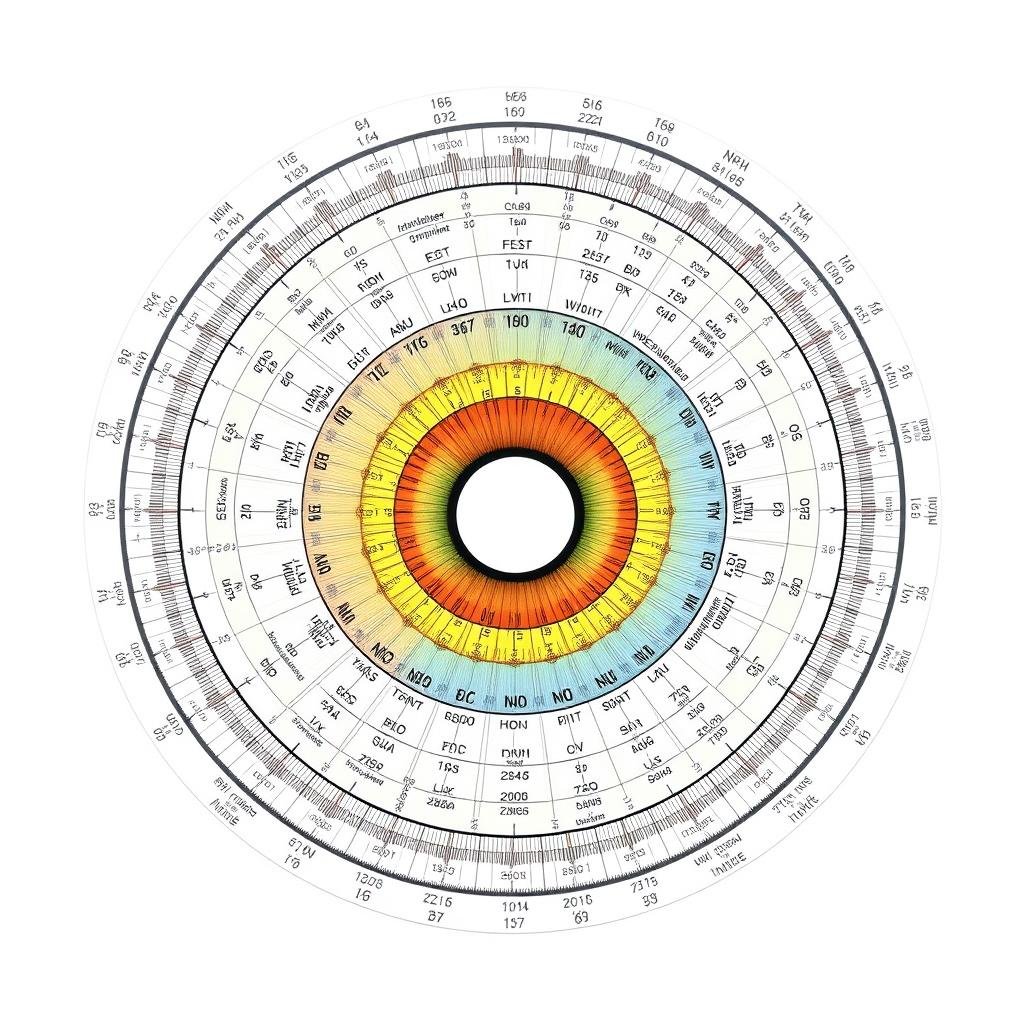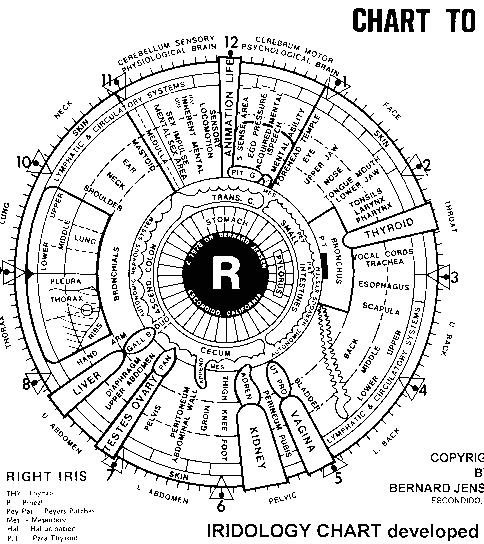The world of iridology owes much to the pioneering work of برنارڊ جينسن, whose comprehensive iris analysis system revolutionized how practitioners assess health through the eyes. His detailed iridology chart remains the gold standard for mapping the intricate relationship between iris markings and bodily systems. This guide explores the depth and significance of Bernard Jensen’s iridology chart, explaining its zones, markings, and practical applications for health assessment.
The Legacy of برنارڊ جينسن in Iridology

Dr. Bernard Jensen pioneered modern iridology techniques in the United States
برنارڊ جينسن (1908-2001) was a visionary in the field of natural medicine who dedicated his life to understanding the connection between iris patterns and health. After recovering from his own health challenges using natural approaches, he became fascinated with how the body reveals its condition through the eyes. His journey into iridology began after being mentored by notable figures including Victor Rocine, a Norwegian homeopath who introduced him to natural healing principles.
As a chiropractor and nutritionist, برنارڊ جينسن established several nature cure sanitariums in California where he treated thousands of patients with chronic conditions. During this extensive clinical work, he meticulously documented iris patterns and their correlation with health conditions, gradually developing what would become the most comprehensive iridology chart system in the Western world.
What distinguished Bernard Jensen’s approach was his systematic documentation and classification of iris signs. Over 50 years of clinical observation, he refined his chart to create a practical tool that practitioners could use to assess overall health and identify potential areas of concern in the body.
Understanding the برنارڊ جينسن Iridology Chart Structure



The classic Bernard Jensen iridology chart divides the iris into zones corresponding to body systems
جي برنارڊ جينسن iridology chart is organized as a circular map that divides the iris into zones corresponding to different organs and body systems. This chart follows a logical arrangement where the body is essentially “mapped” onto the iris in a systematic way. Understanding this organization is fundamental to applying iridology in practice.
The Zonal Approach of Bernard Jensen’s چارٽ
The chart divides the iris into seven concentric zones radiating from the pupil to the outer edge of the iris. Each zone represents different body systems:
- Zone 1 (Stomach Zone): The area immediately surrounding the pupil, representing digestive function
- Zone 2 (Intestinal Zone): Representing the small and large intestines
- Zone 3 (Nutritive Zone): Relating to metabolic and nutritional processes
- Zone 4 (Blood Zone): Corresponding to circulation and blood quality
- Zone 5 (Muscular Zone): Representing muscular tissues and function
- Zone 6 (Skeletal Zone): Corresponding to bones and skeletal structure
- Zone 7 (Skin Zone): The outermost zone representing the skin and elimination
The Clock Face Division in Bernard Jensen’s سسٽم
Beyond the concentric zones, برنارڊ جينسن further divided the iris using a clock face analogy. This division creates specific sections that correspond to particular organs and body regions:
Here is more details breakdown organs and systems represented by each eye. These charts serve helpful guide identifye concern based on corresponde Iridology signs.

iridology Chart Left eye (Represents Left Side Body)
| Inidology تي مقام |
جسم جو علائقو / عضو مشغول آهي |
اهم صحت جا اشارا |
ممڪن مسئلا يا عدم توازن |
| 12 وڳي |
Left brain (psychological) |
Mental health, emotional state |
Stress, anxiety, depression, mental exhaustion |
| 1-2 وڳي |
Left face/neck |
Skin health, tension in neck muscles |
Migraines, neck pain, TMJ disorders, sinus issues |
| 2-3 وڳي |
Left throat |
Respiratory and throat function |
Sore throat, hoarseness, respiratory infections |
| 3-4 وڳي |
Left upper back |
Spinal health, upper back and shoulder muscles |
Upper back tension, shoulder pain, poor posture |
| 4-5 وڳي |
Left stomach |
Digestive function, acid production |
Stomach ulcers, indigestion, low stomach acid |
| 5-6 وڳي |
Left pelvic region |
Reproductive organs, urinary system |
Menstrual issues, urinary tract infections, pelvic pain |
| 6-7 وڳي |
Left lower back/legs |
Musculoskeletal health, leg circulation |
Sciatica, hip problems, lower back pain, leg cramps |
| 7-8 وڳي |
Left kidney |
Kidney and urinary function |
Kidney stones, bladder issues, water retention |
| 8-9 وڳي |
Left lungs |
Respiratory health, lung capacity |
Asthma, chronic bronchitis, shortness breath |
| 9-10 وڳي |
Left heart |
Cardiovascular system, emotional well-bee |
Heart disease, chest pain, circulatory issues |
| 10-11 وڳي |
Left digestive organs |
Digestive system health |
Constipation, bloate, poor digestion, liver function |
| 11-12 وڳي |
Left pancreas/spleen |
Blood sugar regulation, immune health |
Diabetes, hypoglycemia, digestive issues, autoimmune problems |

oridology صحيح اکين جو چارٽ (سا side ي طرف واري جسم جي نمائندگي ڪري ٿو)
| Inidology تي مقام |
جسم جو علائقو / عضو مشغول آهي |
اهم صحت جا اشارا |
ممڪن مسئلا يا عدم توازن |
| 12 وڳي |
صحيح دماغ (نفسياتي) |
سنجيدگي واري صحت، ذهني وضاحت |
سنجيدگي وارو خاتمو، ذهني ٿڪ، دٻاء |
| 1-2 وڳي |
سا face ي منهن / ڳچي |
چمڙي جي صحت، سا right ي طرف گردن ۾ تڪرار |
جوب جو درد، تڪرار سر درد، سينوس مسئلا |
| 2-3 وڳي |
ساڄو رستو |
سا lund ڙن lung ڙن، تايرايڊ، ۽ گلا صحت |
سورن جي گولي، کنگهه، ڳري، تايراڊ عدم توازن |
| 3-4 وڳي |
سا upper و مٿو پوئتي |
مٿيون اسپائن، ڪلهي، ۽ l l ڙن جي صحت |
ڪلهن، سانس جي مسئلن ۾ تڪرار، مٿو پوئتي درد |
| 4-5 وڳي |
ساڀو معاوضو |
هضم جا مسئلا، معدي تيز پيداوار |
دل جي برن، پيٽ جو السر، بدمعاش |
| 5-6 وڳي |
سا pelvic و پيلو علائقو |
پيدائش واري عضون، صحيح ٻاراڻي، پيشاب جو نظام |
پروسٽٽ مسئلا، حيض جا مسئلا، پيشاب جي پيچيده انفيڪشن |
| 6-7 وڳي |
صحيح هيٺين پوئتي / پير |
گردش، musculoskelelalalal صحت |
اسڪائوٽا، عضلات جا craps ڙا، ٽنگ گردش جا مسئلا |
| 7-8 وڳي |
سا kid ي ٻار |
گردڪ فنڪشن، فطرتي برقرار رکڻ |
گردي جي بيماري، پيشاب جي انفيڪشن، ڊي هائيڊريشن |
| 8-9 وڳي |
سا light ڙا l l ڙن |
تنفس جي صحت، lung ڙن جي فنڪشن |
برونچائٽس، دمه، دائمي رڪاوٽ پطري بيماري |
| 9-10 وڳي |
اصل تحہ |
دل جي صحت، دل جي فنڪشن |
هائپر ٽائونشن، دل جي بيماري، جذباتي دٻاء |
| 10-11 وڳي |
صحيح هاضمي عضون |
هضم ۽ غذائيت جا جذب |
قبض، آئيبس، جگر جا مسئلا، بدمعاش |
| 11-12 وڳي |
صحيح پينڪريريا / ڳلي |
مدافعتي نظام، رت جي شگر جي ضابطي |
ذیابيطس، مدافعتي نظام جي ڪمزوري، هاضمي خرابي |
This detailed mapping system allows practitioners to correlate specific iris markings with particular organs or systems, creating a comprehensive picture of the body’s condition according to iridology principles.
Interpreting Iris Signs Using Bernard Jensen’s Methodology
برنارڊ جينسن identified numerous iris signs that indicate different health conditions. His detailed classification system helps practitioners recognize patterns that may suggest imbalances or weaknesses in specific body areas.
Key Iris Markings in Bernard Jensen’s چارٽ
اڏاوتن جا نشان
- Lacunae: Enclosed darkened areas indicating tissue damage
- Crypts: Open spaces in the iris fiber structure
- Radii Solaris: ٻاھران نڪرندڙ ڳالھائيندڙ لڪيرون
- Nerve Rings: Circular lines indicating nervous tension
Color Signs
- White: Inflammation or acute activity
- Yellow: Kidney or urinary involvement
- Orange: Liver or gallbladder issues
- Brown: Liver imbalance or toxicity
- Black: Severe tissue destruction
Pupil Signs
- Flattened Pupil: Possible nervous system stress
- Dilated Pupil: ايڊينلل ٿڪ يا ٿڪجڻ
- Constricted Pupil: Irritation or stimulation
- Pupil Flare: Digestive system weakness

Dr. Jensen dedicated decades to teaching his iridology system to practitioners worldwide
برنارڊ جينسن emphasized that these signs should not be interpreted in isolation but as part of a comprehensive assessment. He taught that the iris reveals constitutional strengths and weaknesses rather than providing specific disease diagnoses. This holistic approach aligns with his broader philosophy of treating the whole person rather than just symptoms.
Practical Applications of the برنارڊ جينسن Iridology چارٽ
جي برنارڊ جينسن iridology chart serves as more than just a diagnostic tool—it provides a framework for understanding the body’s interconnected systems and guiding holistic health approaches.
How Practitioners Apply Bernard Jensen’s Chart Today
Modern practitioners use Bernard Jensen’s chart in several key ways:
- Constitutional Assessment: Identifying inherent strengths and weaknesses in body systems
- Preventative Guidance: Suggesting supportive measures for potentially vulnerable areas
- Nutritional Planning: Developing targeted nutritional protocols based on iris indications
- Progress Monitoring: Tracking changes in iris patterns over time as health improves
- Client Education: Using the visual nature of iridology to help clients understand their health
Need Expert Iridology Guidance?
Our specialists can help you understand what your iris reveals about your health using Bernard Jensen’s proven methodology.
Call Us: 8613-51090-74-01
Case Example: Using Bernard Jensen’s Chart in Practice
“When I first examined Sarah’s iris, I noticed distinct lacunae in the intestinal zone at approximately 7 o’clock in her right iris. Following Bernard Jensen’s chart, this indicated potential weakness in the ileocecal valve area. After discussing her symptoms of periodic digestive discomfort, we developed a targeted nutritional protocol. Six months later, not only had her symptoms improved, but the iris markings had become less pronounced—exactly as Dr. Jensen’s work predicted.”
— Dr. Elizabeth Chen, Iridology Practitioner
This case exemplifies how Bernard Jensen’s detailed mapping system continues to guide practitioners in developing personalized health protocols based on iris analysis.
Evolution of Bernard Jensen’s Chart in Modern Practice
حال ۾ Bernard Jensen’s original chart remains foundational, technology has enhanced how practitioners apply his methodology:
- Digital Imaging: High-resolution cameras capture detailed iris images
- Software Analysis: Programs overlay Jensen’s chart onto digital iris photos
- Comparative Analysis: Tracking subtle changes over time through digital records
- Enhanced Visualization: Digital magnification reveals details invisible to the naked eye
Did you know? برنارڊ جينسن documented over 1,000 iris photographs throughout his career, creating one of the most extensive iridology research collections of his time.
These technological advancements have made Bernard Jensen’s methodology more accessible and precise, while still honoring the fundamental principles he established through decades of clinical observation.
Scientific Perspectives on Bernard Jensen’s Iridology
The scientific community has varying perspectives on iridology as developed by برنارڊ جينسن. While conventional medicine has been skeptical of some claims, research continues to explore potential correlations between iris patterns and health conditions.
ثبوت ثبوت
- Some studies show correlations between iris patterns and genetic predispositions
- Research on iris structure as a potential biomarker continues to develop
- Clinical experience of practitioners reports positive outcomes
- غير ناگوار فطرت ان کي محفوظ مڪمل تشخيصي اوزار بڻائي ٿو
حددون
- Limited large-scale controlled studies validating all aspects of iridology
- Variation in practitioner interpretation can affect consistency
- Not intended to replace conventional medical diagnosis
- Some correlations may be coincidental rather than causal
برنارڊ جينسن himself acknowledged that iridology should be used as part of a comprehensive health assessment rather than as a standalone diagnostic tool. This balanced perspective continues to guide responsible practitioners who use his methodology.
Resources for Learning Bernard Jensen’s Iridology System

Dr. Jensen authored numerous books detailing his iridology system and natural healing approaches
For those interested in learning more about Bernard Jensen’s iridology system, several valuable resources are available:
Essential Books
- سائنس ۽ ارادي جي مشق – Jensen’s foundational text
- Iridology Simplified – An accessible introduction to his system
- ارڊولوجيز: هيالنگ آرٽس ۾ سائنس ۽ مشق – Advanced concepts
- Dr. Jensen’s Guide to Better Bowel Care – Complementary health approaches
Training Programs
- Bernard Jensen International certification courses
- International Iridology Practitioners Association programs
- Online courses based on Jensen’s methodology
- Workshops offered by certified Jensen method instructors
Tools and Equipment
- Professional iris cameras
- Printed Jensen iridology charts
- Digital analysis software
- Magnification equipment
- Reference materials and case studies
Interested in Iridology Tools and Resources?
Contact us to learn about available برنارڊ جينسن iridology charts, books, and professional equipment for practitioners.
اي ميل: لوسي@iriscope.org
اڪثر پڇيل سوال بابت Bernard Jensen’s Iridology چارٽ
How accurate is Bernard Jensen’s iridology chart for health assessment?
Bernard Jensen’s chart is best viewed as a tool for identifying potential areas of weakness or imbalance rather than diagnosing specific diseases. Its accuracy depends on the practitioner’s skill and experience in interpretation. Many practitioners report valuable insights when used as part of a comprehensive health assessment approach.
How does Bernard Jensen’s chart differ from other iridology systems?
Bernard Jensen’s chart is more detailed and systematically organized than many other systems. While European iridology charts (particularly German systems) may use different zone mappings, Jensen’s American approach is distinguished by its comprehensive organ mapping and practical clinical application focus.
Can I learn to use Bernard Jensen’s iridology chart on my own?
While Jensen’s books provide excellent information, proper application of his iridology system typically requires formal training. The nuances of iris interpretation are best learned through guided instruction from experienced practitioners who can demonstrate proper technique and interpretation.
Does eye color affect the application of Bernard Jensen’s chart?
Yes, برنارڊ جينسن recognized that different colored irises present different challenges in interpretation. Blue eyes typically show markings more clearly, while brown eyes require more careful observation. His system includes specific guidelines for interpreting different eye colors.
The Enduring Legacy of Bernard Jensen’s Iridology چارٽ
The iridology chart developed by برنارڊ جينسن represents one of the most significant contributions to natural health assessment in the 20th century. Through meticulous observation and documentation, Jensen created a system that continues to guide practitioners in understanding the complex relationship between iris patterns and bodily health.
While debates about iridology’s scientific standing continue, there’s no denying the impact of Bernard Jensen’s work in advancing holistic approaches to health assessment. His emphasis on treating the whole person rather than isolated symptoms aligns with contemporary integrative medicine principles.
For those interested in exploring this fascinating field, Bernard Jensen’s chart provides a structured, comprehensive framework that has stood the test of time. Whether you’re a health practitioner seeking additional assessment tools or an individual interested in holistic health approaches, the Jensen iridology system offers valuable insights into the body’s intricate interconnections as revealed through the window of the eyes.
Discover How Iridology Can Enhance Your Health Journey
Our team of specialists is trained in Bernard Jensen’s iridology methodology and can provide personalized iris analysis and health guidance.


























